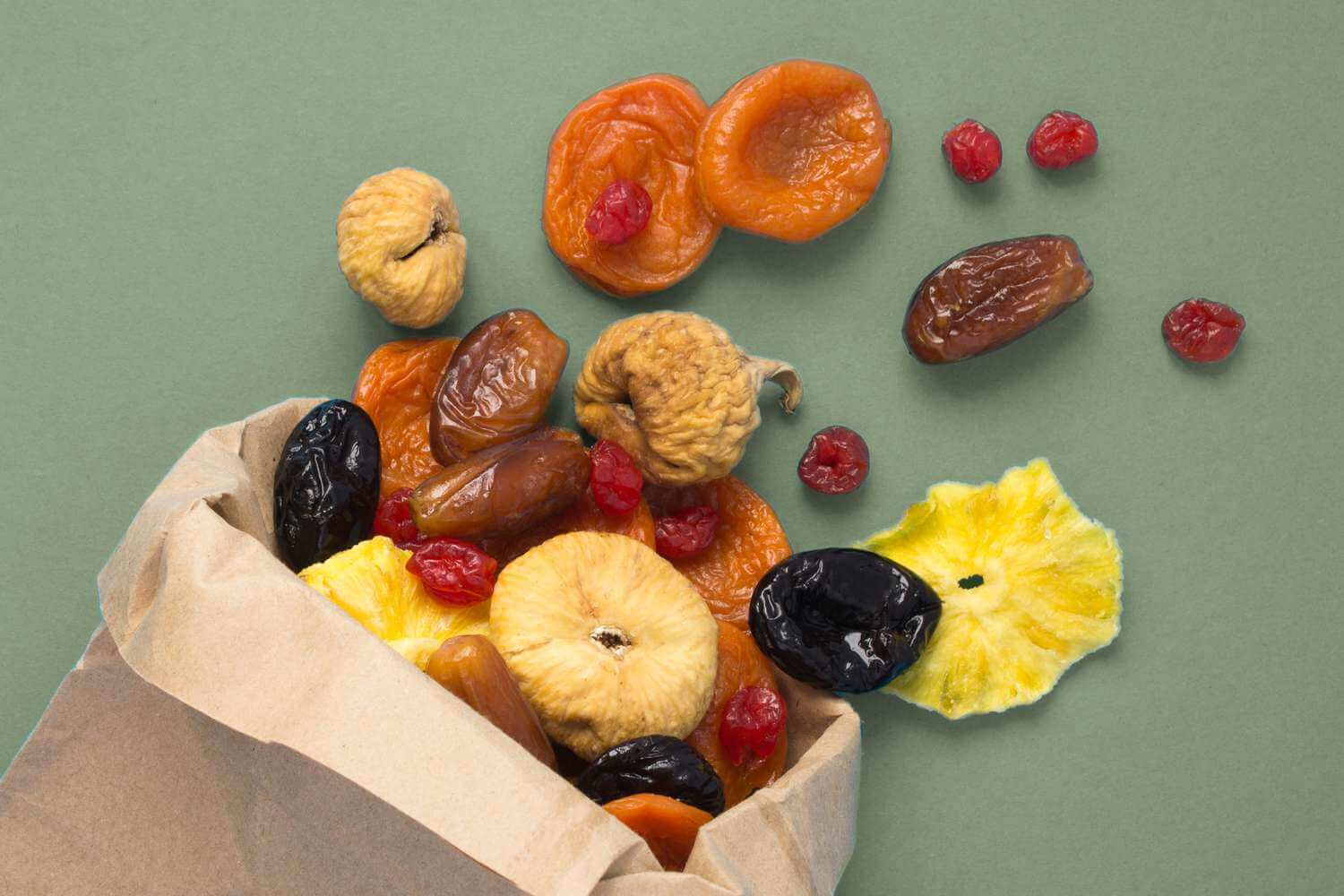- Thriving Guide
- Posts
- How Dried Fruit Affects Your Blood Sugar
How Dried Fruit Affects Your Blood Sugar
Dried fruit may be nutrient-dense, but its concentrated sugars can cause blood sugar spikes here’s how to enjoy it without the crash.

Dried fruit often carries a health halo it's natural, fiber-rich, and packed with nutrients. But beneath its wholesome image is a key dietary consideration: it can raise your blood sugar faster than fresh fruit.
Whether you're watching your glucose levels, managing diabetes, or simply curious about how dried fruit affects your body, here’s what you need to know and how to enjoy it in a way that supports balanced blood sugar.
Why Dried Fruit Affects Blood Sugar Differently
The biggest difference between fresh and dried fruit comes down to water content. When fruit is dried, the water is removed, concentrating its natural sugars into a much smaller volume.
For example:
¼ cup of raisins has about the same carbs and sugar as 1 cup of grapes but it’s easier to eat a lot more raisins quickly.
Fresh fruit, with its high water content, digests more slowly and dilutes sugar as it's absorbed. Dried fruit, being more compact and dense, is digested faster leading to quicker spikes in blood glucose.
Understanding Glycemic Index (GI) and Glycemic Load (GL)
To better understand how a food affects your blood sugar, consider both its glycemic index and glycemic load:
Glycemic Index (GI): Measures how fast a food raises blood sugar (scale of 0–100).
Low GI: ≤55
Medium GI: 56–69
High GI: ≥70
Glycemic Load (GL): Factors in portion size and gives a more complete picture of a food’s impact on blood sugar.
Low GL: ≤10
Medium GL: 11–19
High GL: ≥20
Here’s how some popular fruits compare:
Fruit (per 100g) | Glycemic Index | Glycemic Load |
|---|---|---|
Raisins | 65 | 51 |
Dried apricots | 35 | 21 |
Dried bananas | 48 | 42 |
Dates | 40 | 27 |
Dried apples | 35 | 21 |
Fresh grapes | 45 | 8 |
Fresh banana | 48 | 8 |
Fresh green apple | 36 | 5 |
Even though some dried fruits have a moderate glycemic index, their glycemic load tends to be high due to their density meaning they can cause a larger spike in blood sugar per serving.
Fiber, Micronutrients, and Antioxidants Still Matter
Dried fruit isn’t all bad news for blood sugar. It still contains:
Fiber: Slows sugar absorption and improves satiety
Micronutrients: Potassium, magnesium, and iron support overall health
Antioxidants (especially polyphenols): May help improve insulin sensitivity and reduce inflammation
The key is how you eat it and how much.
Tips for Enjoying Dried Fruit Without the Blood Sugar Spike
Pair with Protein or Healthy Fats
Combine dried fruit with protein- or fat-rich foods to slow digestion and prevent glucose spikes:Raisins + peanut butter toast
Dates stuffed with almond butter
Oatmeal with dried apples and chia seeds
Trail mix with dried fruit, nuts, and seeds
Greek yogurt with dried blueberries and walnuts
Stick to Small Portions
Dried fruit is energy-dense. A small handful (2–4 tablespoons) is often enough to satisfy a sweet craving without overwhelming your blood sugar.Choose No-Added-Sugar Varieties
Many packaged dried fruits contain added sugars or syrups. Look for labels that say:“No added sugar”
“Unsweetened”
100% fruit
Check Your Response
If you’re managing diabetes or prediabetes, monitor your blood sugar after eating dried fruit. It can help you understand how your body reacts and inform your future choices.
Best Dried Fruit Options for Blood Sugar Control
Some dried fruits have a gentler impact on blood sugar, especially when eaten in moderation:
Dried apricots
Prunes
Dried apples
Unsweetened coconut flakes
Fruits to Eat More Carefully:
Raisins
Dried bananas
Dates
Sweetened cranberries or mango
Can People With Diabetes Eat Dried Fruit?
Yes but with some thoughtful planning. According to recent research published in Dietetics (2023), incorporating small amounts of dried fruit into a balanced diet may even support metabolic health when paired with fiber-rich and whole foods.
Key guidelines for people with diabetes:
Watch portions (no more than 2–3 tablespoons at a time)
Choose fruits with no added sugar
Pair with protein or healthy fats
Monitor blood glucose after eating
The Bottom Line
Dried fruit can be part of a balanced diet but due to its concentrated natural sugars, it affects your blood sugar differently than fresh fruit. The key to enjoying it without the spike? Mind your portions, choose wisely, and pair smartly.
Found this helpful? Share with a friend or subscribe to our newsletter for more science-backed wellness tips.